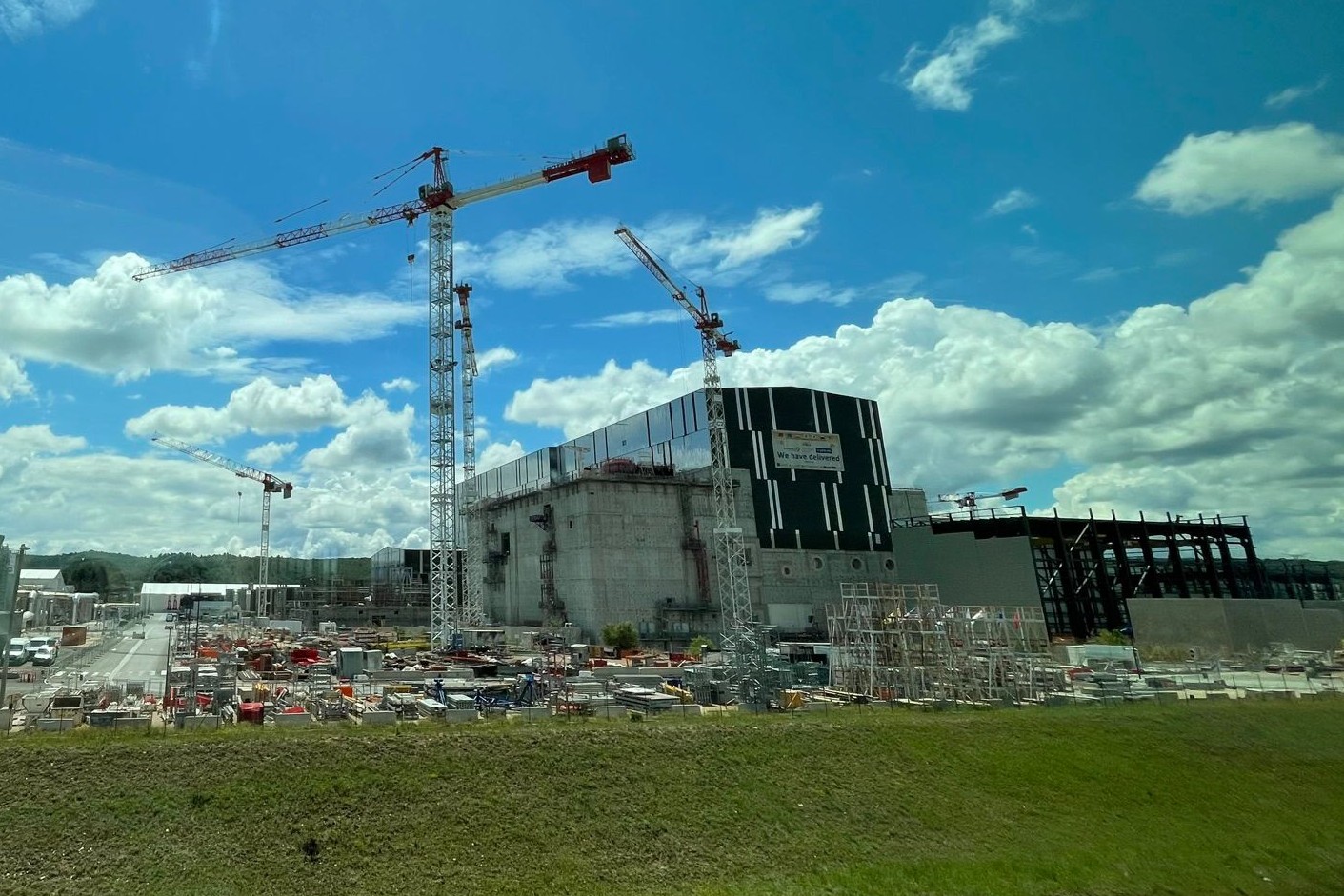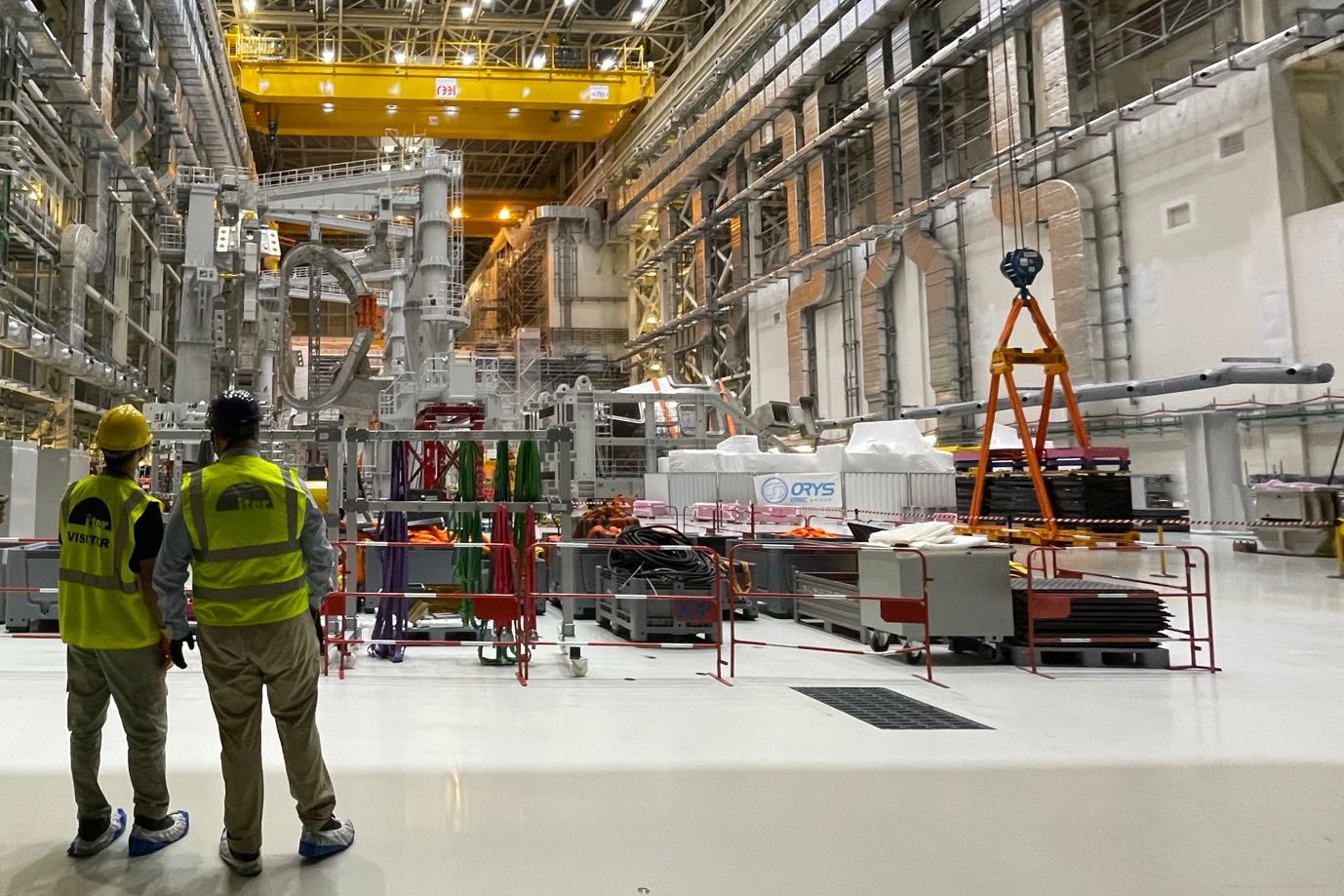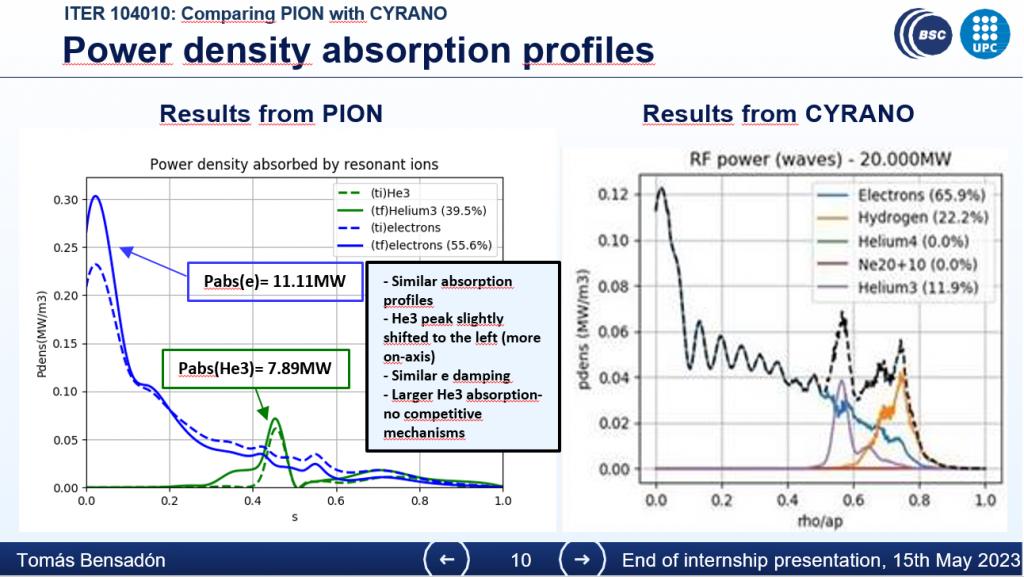
From the 10th of April to the 13th of May, one of the members of our Fusion group, Tomas Bensadon, went on a research stay to the ITER Organization (IO) Headquarters in Cadarache, France. The research stay took place as an internship, under the 2022- INTERN-SCOP06- ICRH modelling in various scenarios of the ITER Research Plan program. This internship was made possible by the BSC Mobility Program, which was awarded to Tomas Bensadon on August 2022.
The BSC Mobility Programme seeks to boost research activities taking place in specific institutional and organizational environments in which a scientific community works closely together to achieve common objectives, and provides, among others, financial support to BSC staff who participate in collaborative research between institutions.
During the internship, Tomas worked under the supervision of Dr. Mireille Schneider from the ITER Plasma Modelling & Analysis Section who is one of the developers of the ITER Integrated Modelling and Analysis Suite (IMAS), a platform for ITER research. The work focused on the effect of using magnetosonic waves in the ion cyclotron range of frequencies (ICRF) to heat up the plasma in several ITER scenarios. These ICRF scenarios are particularly relevant for the first years of operations at ITER, when the tokamak will contain hydrogen and helium plasmas. The work was carried out using the ICRF heating code PION as a physics module on a large transport modelling workflow, the European Transport Solver, developed inside the IMAS framework, and on a Python Heating and Current Drive (H&CD) workflow developed by Dr. Schneider for faster simulations focused on heating and current drive effects.

These scenarios were studied inside the framework of Tomas’ PhD thesis research. They focused on recreating some results obtained with different heating codes while studying an innovative heating scheme called the three-ion-scheme. The main goal was to confirm that PION predicted similarly good performance for this particular scheme as the previous codes. This would mean that this scheme provides a viable way of heating the plasma without using the full magnetic field, a condition for which well-performing schemes were lacking.
The results were favourable, and PION predicted similar results to the previous codes. Tomas gave a talk on the main findings to the H&CD division at IO at the end of his internship. Before leaving, he also had an opportunity to have a site tour, including a visit to the assembly hall and seeing the segments of the tokamak, which was a very exciting experience. Back in Barcelona, Tomas gave a Severo Ochoa Research Seminar at BSC summarising the main findings of his stay.

We would like to thank the BSC Mobility Program and ITER Organization for making this intership possible.
